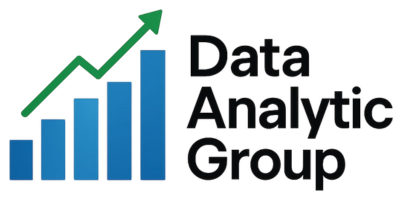
In today’s data-driven world, organizations face mounting pressure to break down silos, reduce complexity, and deliver actionable insights faster than ever. Enter Microsoft Fabric, a game-changing, unified data platform that brings together data engineering, data science, business intelligence, and governance under a single Software-as-a-Service (SaaS) umbrella.
But why should you migrate? And how do you do it without disrupting your business? This guide lays out the compelling reasons and a roadmap to make your migration smooth and strategic.
What’s Changing in Licensing?
Microsoft has retired the ability to purchase or renew Power BI Premium licenses under the P-SKU model. Going forward, all customers—new and existing—must transition to Microsoft Fabric’s F-SKU model.
Transition Periods:
- 30 days of free Fabric capacity (F-SKU) after your Power BI Premium subscription ends.
- 90 days of continued access to your Power BI data.
- Post-90 days: Workspace capacity may slow down (delays of up to 20 seconds) and may eventually freeze, halting report access entirely.
Bottom line? Plan and execute your migration before your current contract ends to avoid disruptions.
Why It’s Worth Migrating to Microsoft Fabric
1. Unified Data Platform
Fabric consolidates the entire data lifecycle into one experience. No more juggling Power BI, Azure Synapse, Data Factory, and third-party tools in separate silos. With Fabric, everything runs cohesively in a single workspace, improving productivity and collaboration.
2. Simplified Architecture
Fabric eliminates tool sprawl by offering Lakehouse, Data Warehouse, Pipelines, Real-Time Analytics, and Power BI in one environment. This reduces the learning curve, boosts maintainability, and cuts down costs.
3. Built-In AI and Copilot
Microsoft Fabric is AI-ready by design. Copilot, integrated across the platform, can help you write DAX, build reports, generate pipelines, and explore data conversationally. It’s like having a virtual assistant for every data persona.
4. Governance & Compliance
Fabric integrates tightly with Microsoft Purview, providing robust lineage, auditing, and security controls. You get centralized data governance with minimal effort.
5. Performance and Scalability
Thanks to OneLake (a single data lake for the entire org), Fabric supports both Delta Lake and traditional SQL workloads with high performance and low latency.
Planning the Migration
Step 1: Assess Your Current Environment
Create an inventory of your existing data sources, pipelines, reports, and tools. Understand what’s legacy, what’s cloud-ready, and what can be retired or consolidated.
Step 2: Define Migration Goals
Are you looking to modernize reporting? Streamline ETL processes? Unify governance? Define your goals to align the migration with business outcomes.
Step 3: Identify Quick Wins
Start with lower-risk, high-impact workloads. For instance, migrating existing Power BI workspaces to Fabric capacity can be an easy entry point.
Implementation Roadmap
Enable Microsoft Fabric in Your Tenant
Work with your IT admin to enable Fabric in your Power BI tenant settings and assign a capacity.
Create Fabric Workspaces
Set up dedicated Fabric workspaces for different business domains. Assign roles and permissions based on need.
Migrate Workloads
- Power BI reports: Move datasets and reports into Fabric workspaces.
- Pipelines: Rebuild or import Data Factory pipelines into Dataflows Gen2.
- Data Engineering: Use Fabric notebooks for Spark-based processing.
- Data Warehouse & Lakehouse: Load data into the new unified storage architecture using shortcuts and One Lake Explorer.
Validate and Optimize
Test performance, validate security and access policies, and run user acceptance testing (UAT).
Train and Enable Users
Leverage Microsoft Learn, internal training, and Fabric Copilot to help users adapt.
Tools to Accelerate Migration
- Power BI Deployment Pipelines: Promote reports and datasets across dev/test/prod.
- OneLake Explorer: Connect local file systems to Fabric storage for easy migration.
- Shortcuts: Reference external data without physically copying it.
Key Advantages of Microsoft Fabric:
- Trusted workspace access – Improved security and granular control
- Private endpoints – Better protection and integration with your existing cloud environment
- Integration with AI & MACC – Leverage Microsoft Azure Consumption Commitment benefits
- Future-proof architecture – Fabric is designed for AI-powered, modern data workloads
Challenges and Solutions
- Skill Gaps: Use Microsoft certification paths and hands-on labs to upskill teams.
- Governance Overload: Start with Purview-lite and scale governance as needed.
- Change Resistance: Run a pilot with a champion team to demonstrate early wins.
Real-World Use Case
A global retail brand consolidated five separate BI tools into Microsoft Fabric. Within two months, they reduced their reporting turnaround time by 60%, slashed costs by 30%, and achieved organization-wide adoption of a single data source of truth.
Manage Fabric security – Training | Microsoft Learn
Get started with Microsoft Fabric – Training | Microsoft Learn
Conclusion
Microsoft Fabric is not just a new tool—it’s a strategic shift in how data is managed, governed, and activated. The time to migrate is now, before fragmentation slows your agility and drives up your costs.
Start small. Prove value. Scale fast.
Happy Reading!

This piece of writing gives clear idea in support of the new users of blogging, that in fact
how to do blogging and site-building.